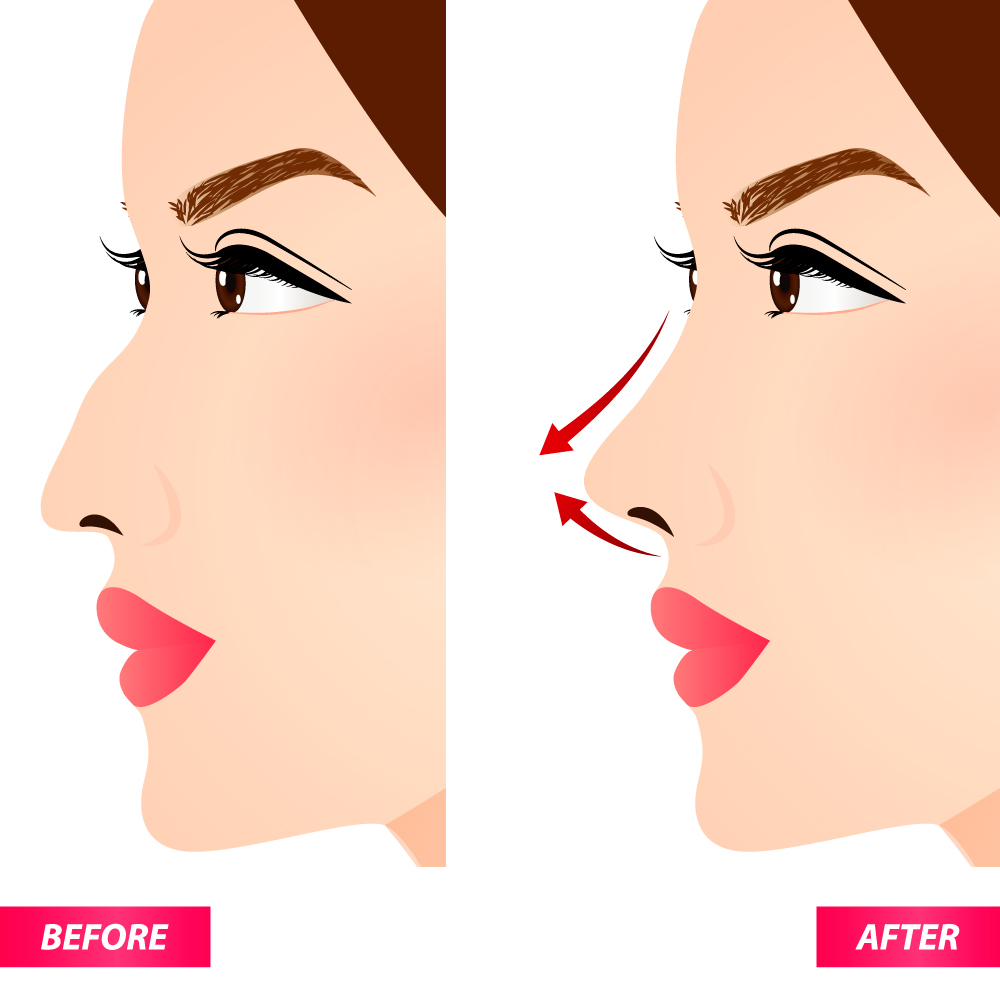
For aesthetic reason, rhinoplasty augmentation can be done to boost your confidence and help create the face you desire. It is a surgical procedure that uses the implant to add height to the nose bridge and give definition to the nose tip.
Silicone nasal implant is a widely used choice for surgical nose augmentation, different sizes and shapes are available and the most common shapes are L-Shape which can increase height to the nasal bridge and make the nose tip projected, while I-Shape is used to augment nasal bridge only. Normally, the silicone implant is pre-formed and allows the surgeon to trim and carve so that it matches the length and width of the patient’s nose, and the desired nose discussed. Silicone is also easy to be inserted into the nose and when the problem occurs, it is also not difficult to remove.
Cartilage graft can be chosen over synthetic nasal implants, ear cartilage may be considered for grafting material to elevate the bridge height. An incision is made behind the ear where it is not noticeable. This requires a separate procedure to harvest the cartilage from your ear extending the amount of time it takes to complete the surgery. Furthermore, if ear cartilage is not inserted into the nose properly, cartilage can shift and twist out of shape. Cartilage graft may also become visible in patients who have thin and transparent skin.
To decide which implant is appropriate, you should discuss with your surgeon; they will consider and choose the best approach to help you achieve the best possible rhinoplasty result.
Preparation
Stop taking aspirin and NSAIDS drugs at least 2 weeks before the surgery. Do not smoke or drink alcohol since it can prolong healing and increase the chance of complications after the surgery.
Post-operative Care
Keep the head raised while sleeping to reduce swelling. Avoid bumping the nose, blowing your nose, bending over or heavy lifting. On the second day following surgery, you may have a shower but please ensure to keep the tape and splint on your nose dry at all times. After one week, you should be able to resume normal daily activities but still need to avoid strenuous physical activities and exercise
Risks
When you undergo the surgical procedure, it is important to understand the risk and side effects that may happen as a result of the surgery. Infection, nosebleeds, bruising, swelling, implant displacement and pressure on surrounding structures are the risks associated with rhinoplasty. To avoid and minimize the complications, follow the surgeon’s instruction and choose a highly qualified rhinoplasty specialist.
Categories
- FACE
- Blepharoplasty or Eyelid Surgery
- Scarless double eyelids surgery
- Rhinoplasty Augmentation
- Chin Implant
- Alar Reduction
- Augmentation Rhinoplasty and Alar Reduction
- Nose Implant Removal
- Facelift Surgery
- Unilateral and Bilateral Dimple Creation Surgery
- Unilateral and Bilateral Otoplasty
- Lip augmentation
- Cheek Implant
- BREAST
- BODY


